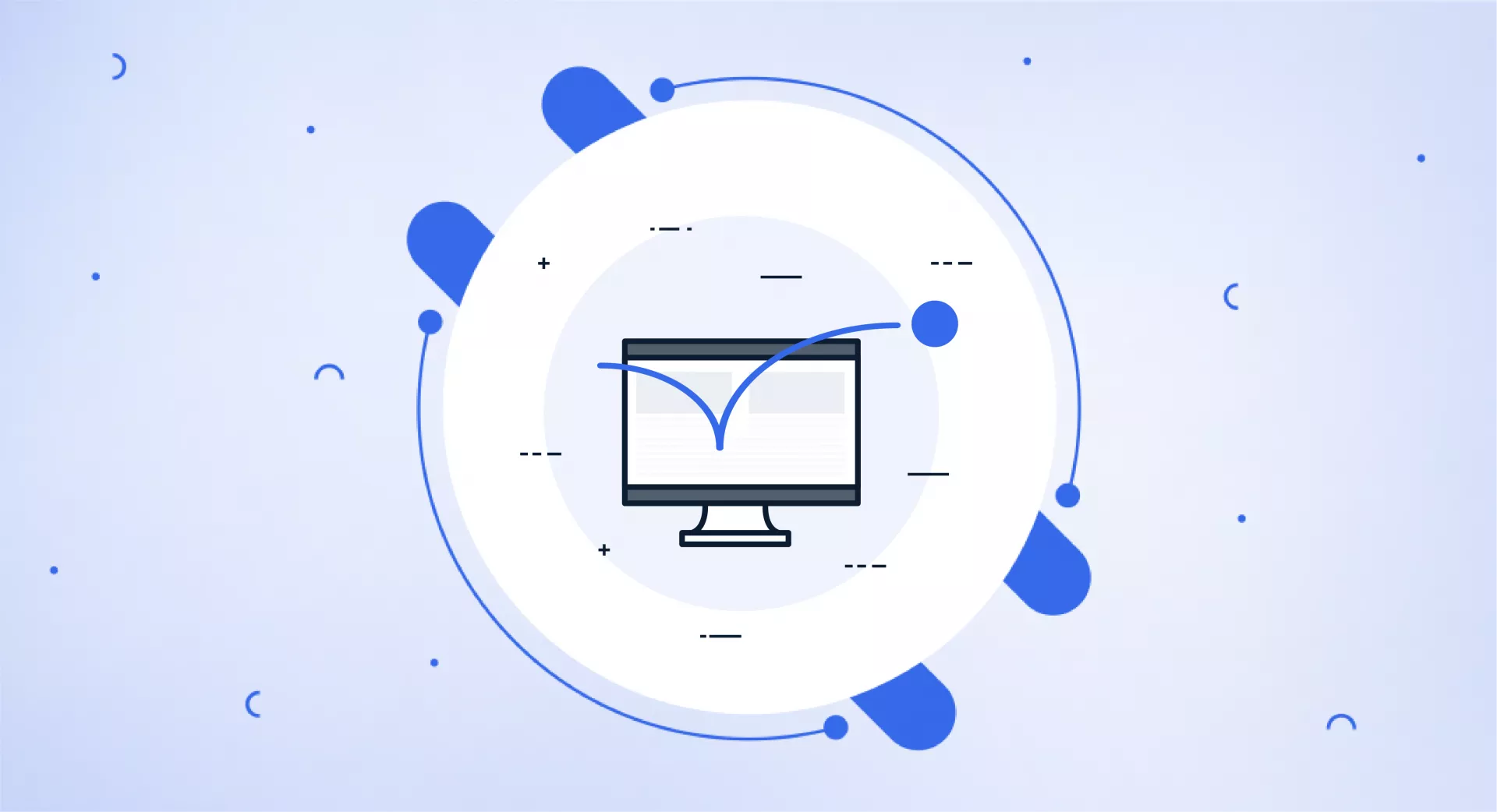What is the Bounce Rate?
Bounce rate is a web analytics metric that reflects the percentage of users who land on a page and leave without clicking through to any other part of the site. They exit after viewing just one page.
In simpler terms, a high bounce rate signals that many visitors are leaving the site after seeing a single page, whereas a low bounce rate implies users are exploring more content and navigating further into the site.
Why is bounce rate important?
Bounce rate helps evaluate how well your site retains and engages visitors. If the percentage is high, it can indicate potential issues with the content or user experience.
Here’s why monitoring bounce rate is crucial:
User Engagement
Bounce rate gives insight into how users interact with your site. If someone arrives and immediately exits, they likely didn’t find what they expected or found the layout difficult to use. Studying this behavior helps identify areas that need refinement.
It’s also a gauge of content value. If people consistently leave after one page, it may suggest the content isn’t compelling or relevant enough. Lowering the bounce rate often means your pages are holding the visitor’s attention better.
Combined with other metrics, bounce rate helps paint a fuller picture of how people use your site. This supports smarter decision-making and website optimization.
Bounce rate is a web analytics metric that reflects the percentage of users who land on a page and leave without clicking through to any other part of the site. They exit after viewing just one page.
In simpler terms, a high bounce rate signals that many visitors are leaving the site after seeing a single page, whereas a low bounce rate implies users are exploring more content and navigating further into the site.
Impact on Conversions
Bounce rate is closely tied to whether users complete desired actions, such as signing up or purchasing. If someone bounces quickly, there's no chance they'll convert.
Reducing your bounce rate can lead to better engagement. When users explore multiple pages, there's a greater likelihood they’ll complete goals like filling out a form or making a transaction.
Search Engine Visibility
Search engines take user interaction signals into account, including bounce rate, to evaluate content usefulness.
A high bounce rate may indicate that your content isn't satisfying user queries, potentially lowering your rankings in search results.
Bounce Rate vs. Exit Rate
While both bounce rate and exit rate analyze user behavior, they measure different aspects.
Bounce rate refers to visitors who leave after viewing only one page, highlighting lack of deeper interaction or relevance. It’s a measure of initial engagement.
Exit rate, however, is the percentage of users who leave from a specific page—regardless of how many pages they visited before. This can reveal which pages are acting as exit points and might need improvements.
For instance, an exit rate can show you where visitors lose interest even after browsing other content. In contrast, bounce rate focuses on those who never explore further.
Used together, these metrics provide a more detailed view of user experience. A high bounce rate might be normal for landing pages, but high exit rates on important sales or blog pages may need further analysis.
How Is Bounce Rate Calculated?
To find your site’s bounce rate, you need to look at single-page sessions—instances where a visitor enters and leaves from the same page without further activity.
Here’s the formula:
Bounce Rate = (Single-page sessions ÷ Total sessions) × 100
Example: If your site had 1,000 total sessions and 400 were single-page sessions:
Bounce Rate = 400 ÷ 1,000 = 0.4 or 40%
This means 40% of your site’s visitors left without viewing any additional content.
Does Bounce Rate Affect Search Rankings Directly?
Bounce rate is not a direct ranking factor in Google’s search algorithm.
Although bounce rate is often associated with user experience, Google has clarified that it doesn’t use analytics bounce rate as a ranking signal. For example, Google’s John Mueller has explicitly stated that bounce rate, as shown in Google Analytics, doesn’t impact rankings.
Still, a high bounce rate can indirectly hurt rankings if it reflects poor engagement, weak content, or poor usability—factors that can influence how users behave on your site, which Google may assess through other signals like dwell time or click-through rates.
SEO Factors That Influence Bounce Rate
Several elements can contribute to a higher bounce rate, including:
Low-quality content: Irrelevant or unengaging content pushes visitors to leave immediately.
Poor site usability: Complicated navigation, slow loading speeds, or unattractive design can frustrate users.
Audience mismatch: Attracting visitors who aren’t your target demographic will increase the likelihood of them leaving.
Weak mobile experience: If your site doesn’t perform well on mobile devices, users may abandon it quickly.
Misleading meta info: Titles or descriptions that don’t match the actual page content lead to mismatched expectations and quick exits.
Average Bounce Rates by Industry
Average bounce rates differ based on industry, site purpose, and traffic sources. A study revealed average bounce rates across various sectors, but these numbers are just benchmarks.
Context matters. A standalone landing page may naturally have a higher bounce rate than a multi-page blog or e-commerce site. Evaluating your bounce rate should always consider your specific website goals and user journey.
How Google Analytics Tracks Bounce Rate
Google Analytics offers two versions—Universal Analytics (UA) and Google Analytics 4 (GA4)—each with a different bounce rate methodology.
In Universal Analytics (UA):
Bounce rate is defined as the percentage of visits where only one page was viewed and no other interaction occurred. If a visitor opens a page and doesn’t engage further, it’s counted as a bounce.
In GA4:
Bounce rate is now defined as the inverse of engagement rate, which better reflects user interaction. A session is considered “engaged” if it includes a conversion, lasts over 10 seconds, or includes multiple pageviews.
This shift helps focus on meaningful interactions rather than just tracking single-page visits.
Finding Bounce Rate in UA:
Go to the Behavior tab.
Click on Site Content → All Pages.
View bounce rates in the corresponding column for each page.
Important note: Google stopped processing new data in Universal Analytics as of July 1, 2023. Users must now migrate to GA4. Only 360 UA accounts received extended support until July 1, 2024.
Find on GA4
Open the Reports section.
Navigate to Engagement → Pages and screens.
Click the pencil icon to customize the report.
Under Metrics, add Bounce rate to your view.
Rearrange and apply changes to save the updated report.
Engagement Rate Formula:
Engagement Rate = (Engaged Sessions ÷ Total Sessions) × 100
How to Reduce Bounce Rate
Here are proven ways to decrease bounce rate and improve engagement:
Boost load times: Compress images and code, and use CDNs to accelerate your site speed.
Strengthen content: Ensure it’s relevant, well-written, and engaging for your target audience.
Enhance UX: Design intuitive navigation and easy-to-use layouts to retain users.
Attract the right traffic: Use targeted keywords and ensure your messaging appeals to the correct audience.
Use clear CTAs: Guide users toward specific actions with obvious calls to action.
Upgrade design: A clean, responsive layout across devices keeps users engaged.
Add a table of contents: Help users jump to relevant sections, increasing time spent on the page.
Write for readability: Use simple language, break up long text, and include subheadings.
Leverage internal links: Guide users to other relevant pages to encourage continued browsing.
Use descriptive anchor text: Tell users what to expect when they click through, making them more likely to stay.
Conclusion
Bounce rate is a valuable performance indicator that sheds light on how users interact with your website.
Lowering your bounce rate can lead to a better overall experience, more conversions, and improved SEO outcomes. However, it should always be assessed alongside other metrics such as session duration, pages per session, and conversion rate.
By taking a holistic view of user behavior, you can make informed, data-driven decisions to enhance site performance and achieve your business goals.


